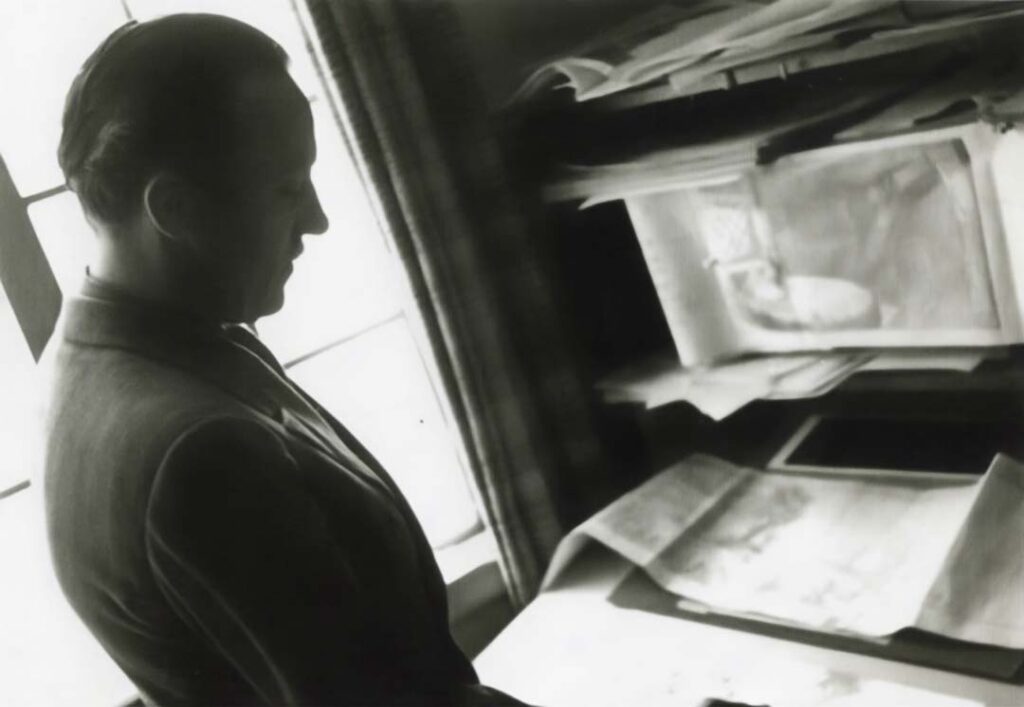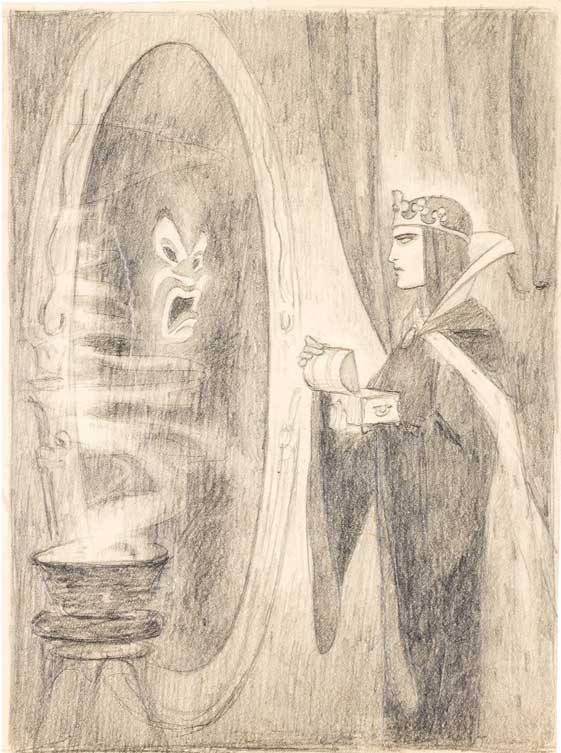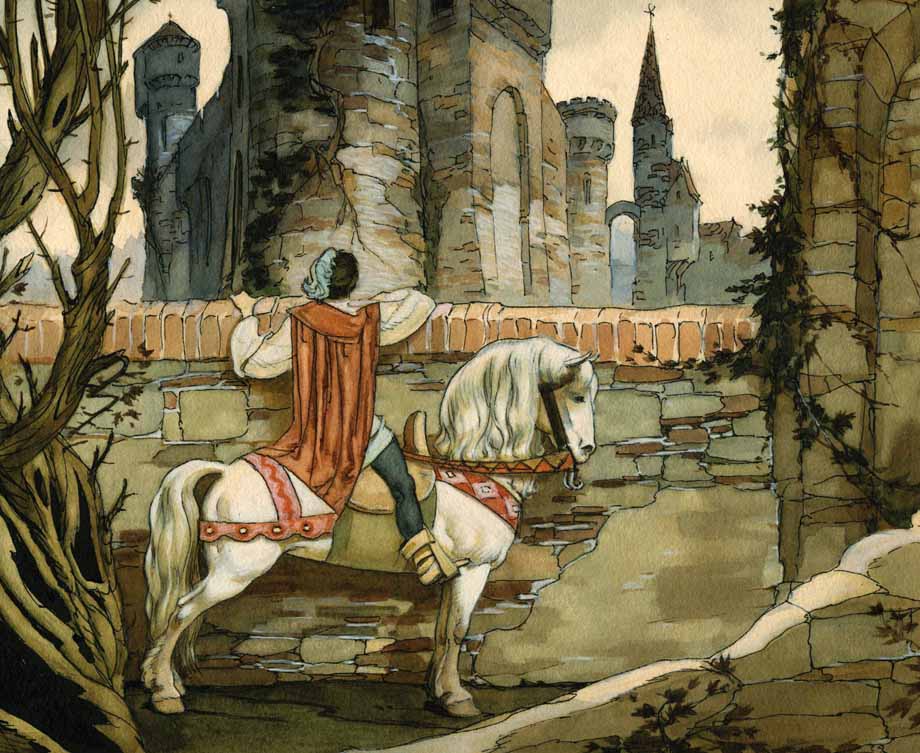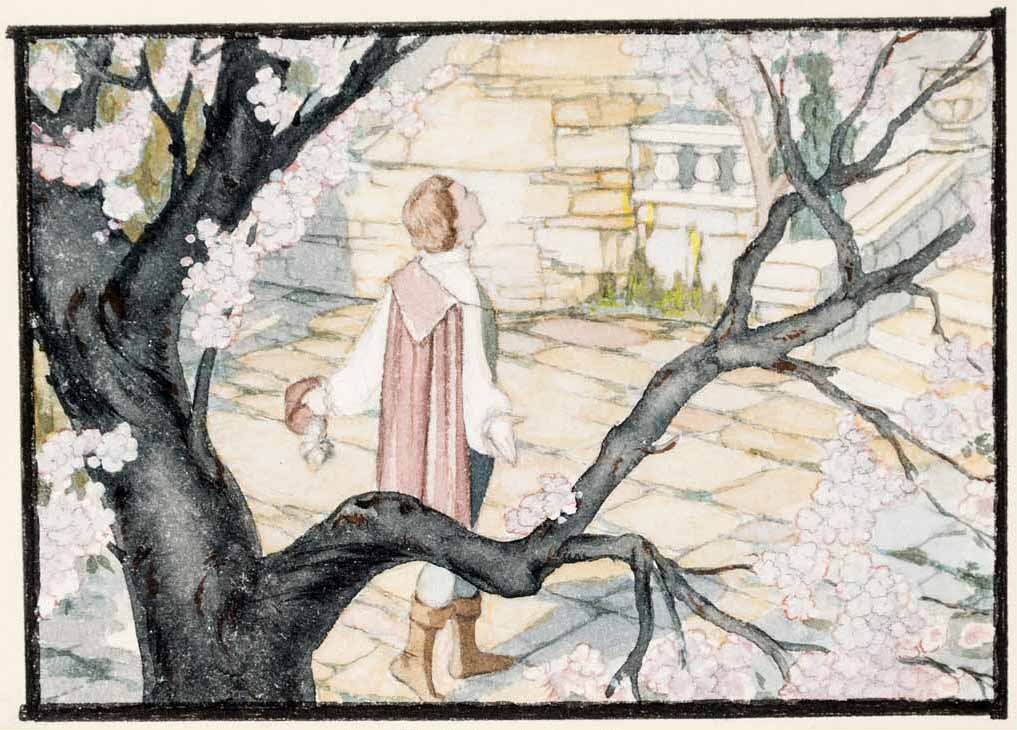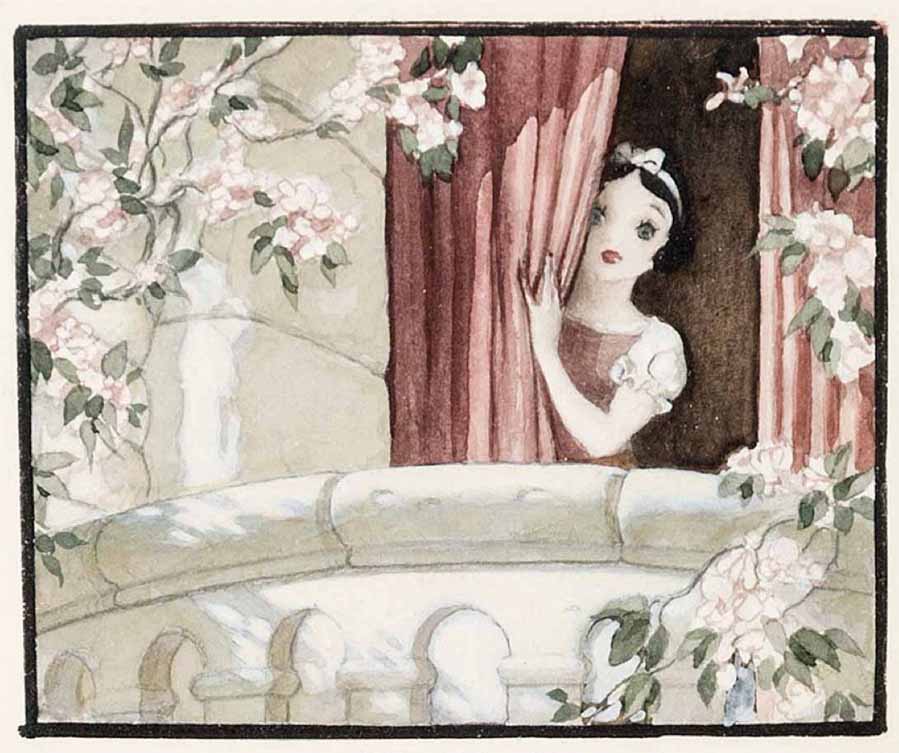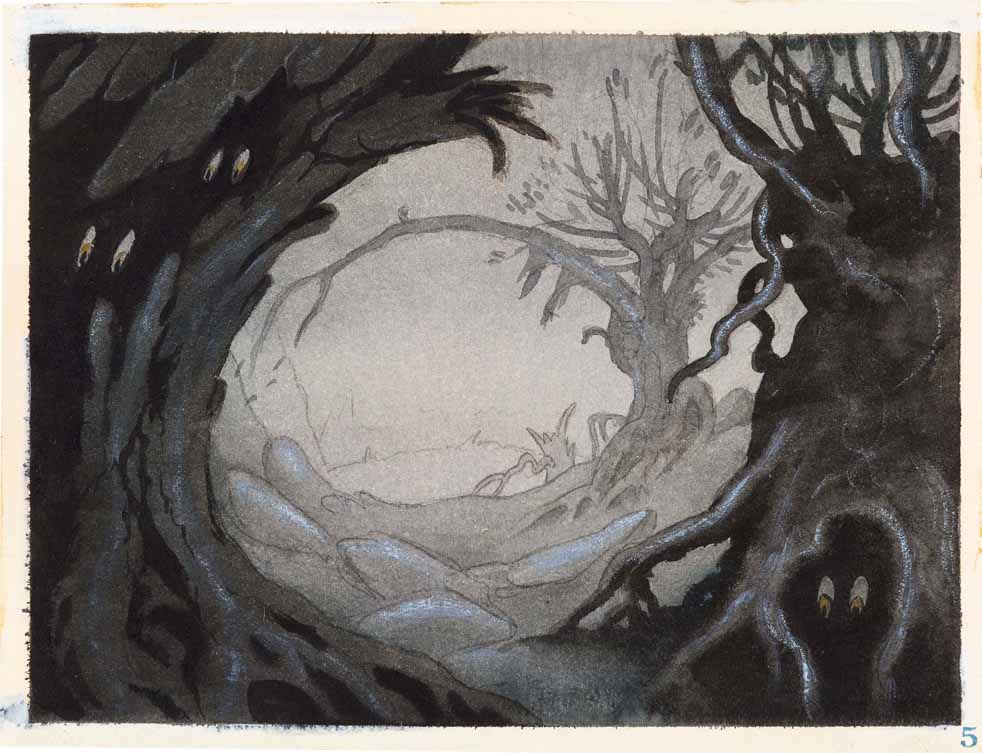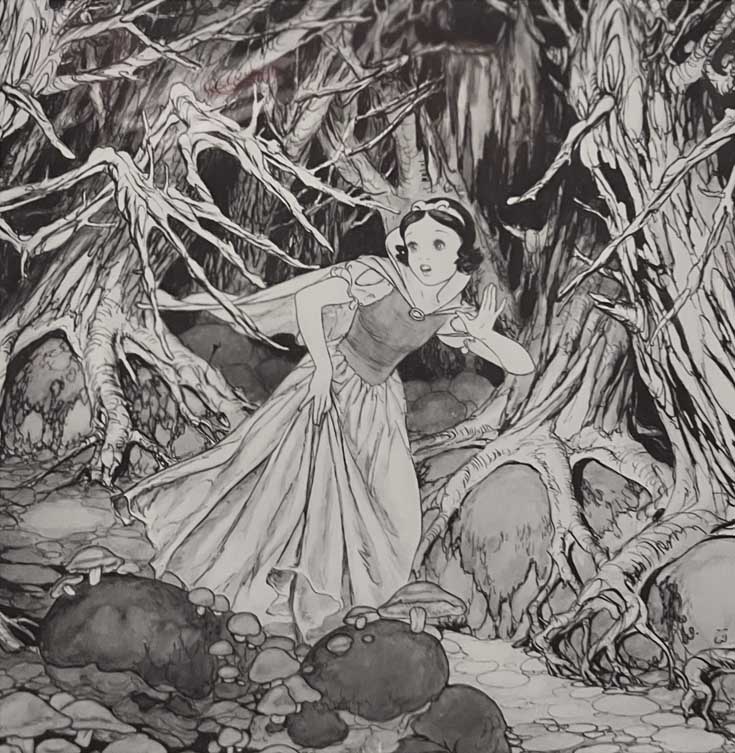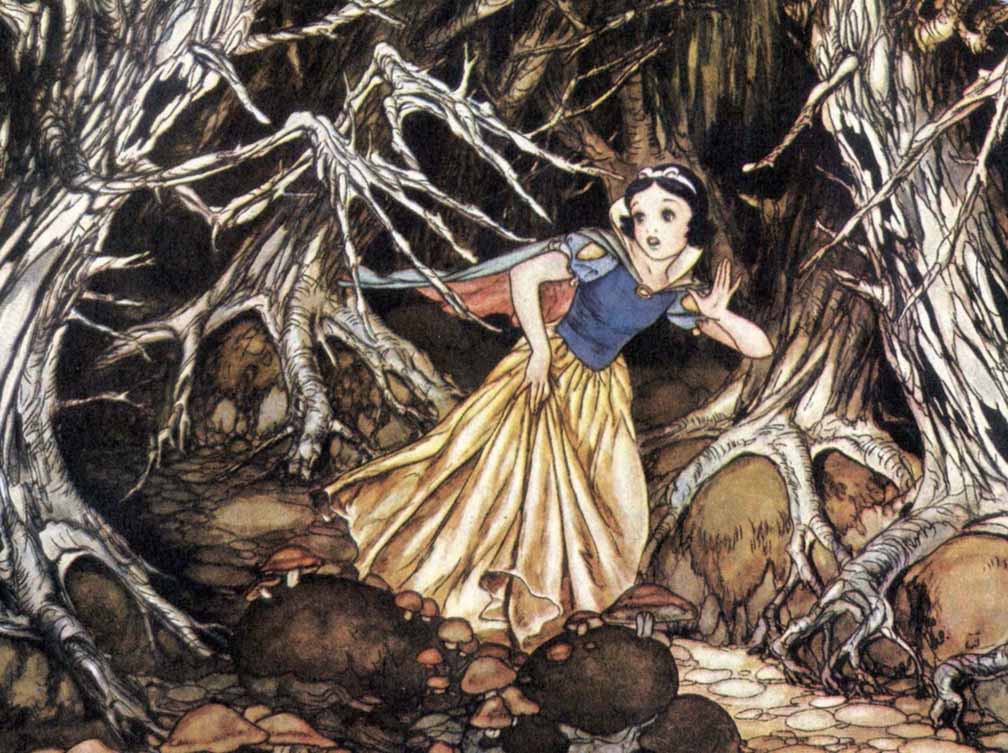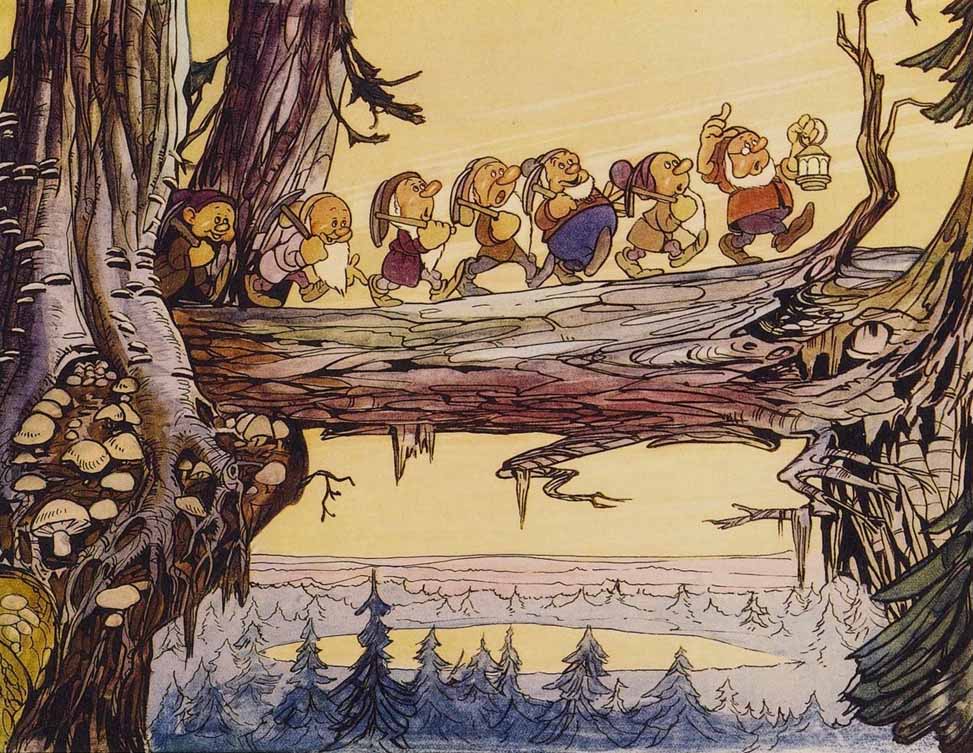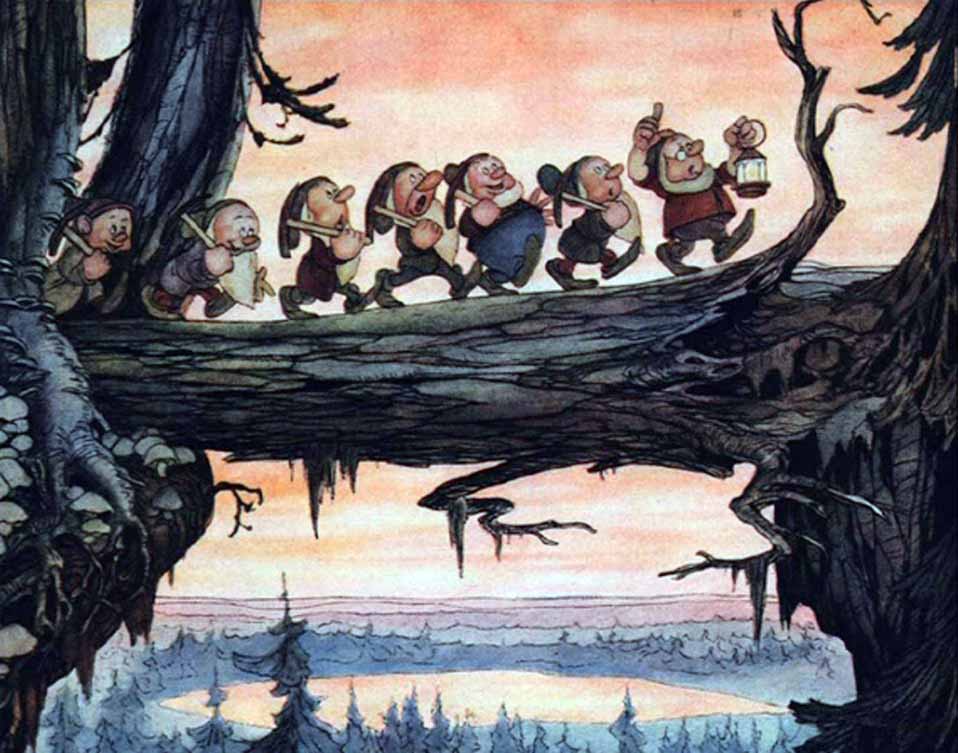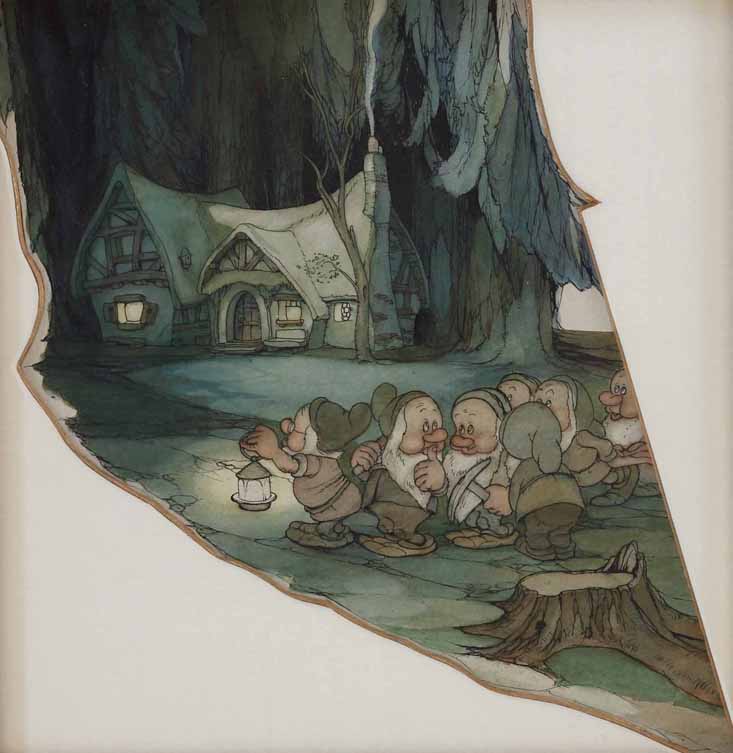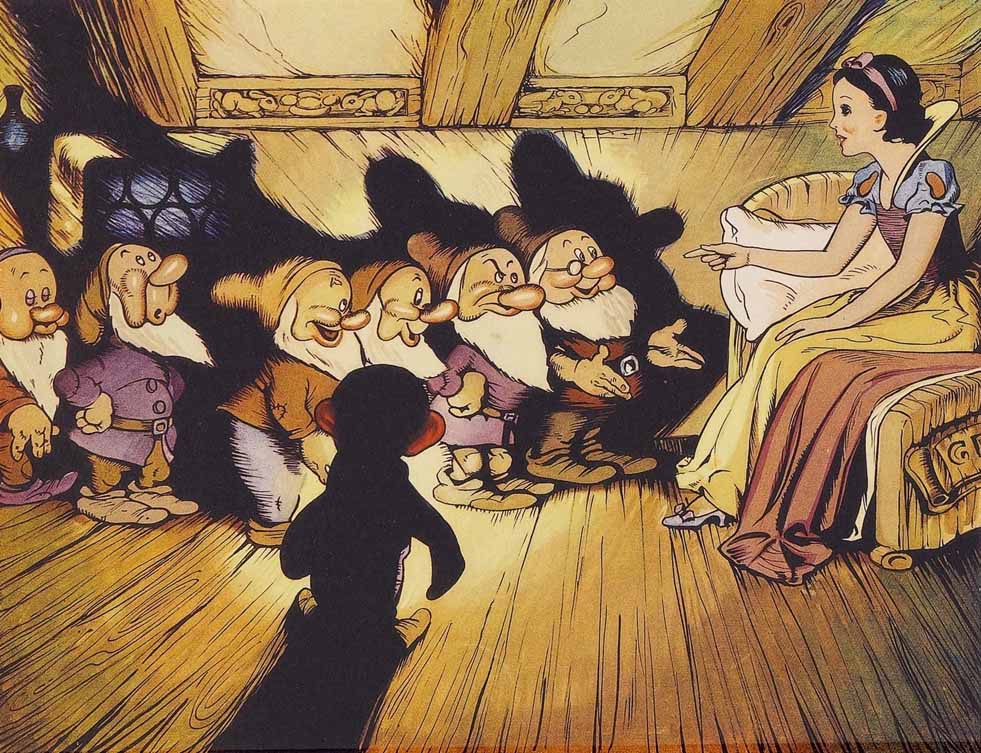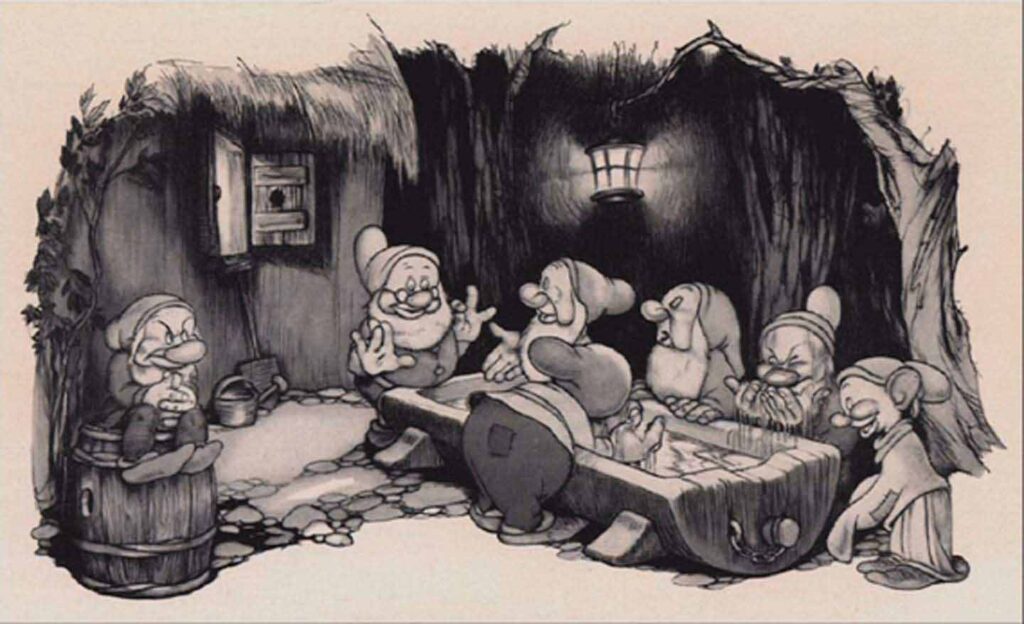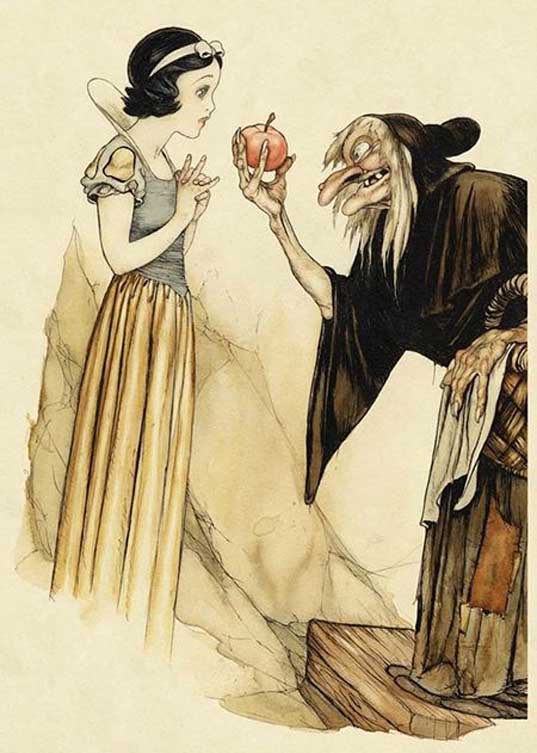Information
Full name: Gustaf Tenggren
Birth: November 3, 1896 in Magra Socken, Sweden
Death: April 9, 1970, in Southport, Maine
Marriages:
Anna Peterson (1918 – September 21, 1927)
Malin ‘Mollie’ Fröberg (1927 – April 9, 1970)
Worked at the Disney studio between:
April 9, 1936 – January 14, 1939
Job on Snow White:
Art director
Promotional material designer (uncredited)
Back to Main Titles
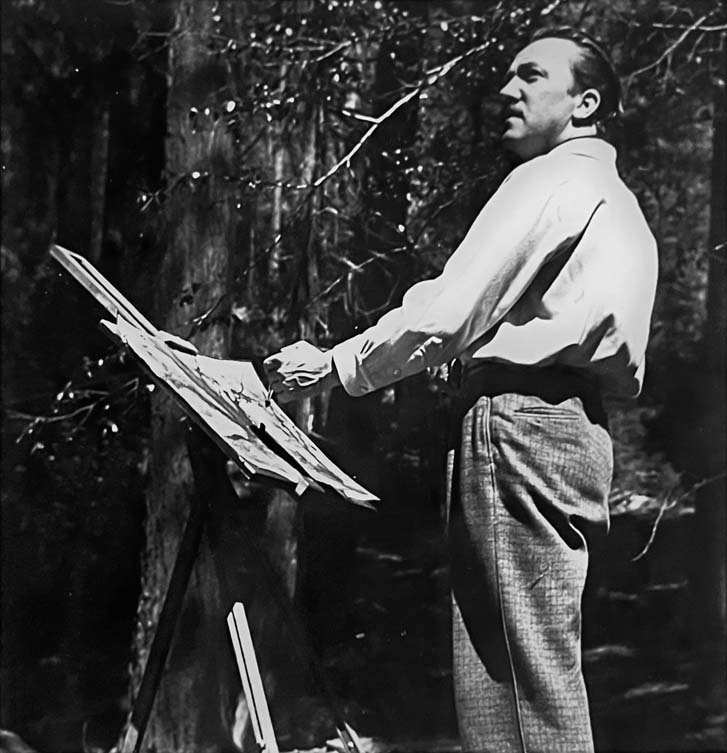
A Swedish designer
One of the few European veterans on the Disney team, Gustaf Tenggren was born in Sweden and was nearly 40 years old when he joined the young artists at the studio. Animator Frank Thomas once admitted that “he was not well liked”—perhaps because Tenggren was a quiet, introspective man who remained deeply focused on his work and fully aware of his value. His now-iconic illustration of the characters gathered in front of the castle—though not based on the final character designs—was nonetheless chosen to feature on one of the film’s posters, in the campaign book, and on many related products. Decades later, it would continue to inspire designers for theme parks and other adaptations.
Tenggren came from a large family of two boys and four girls, raised in Gothenburg. His father, a painter and woodcarver, greatly influenced young Gustaf’s artistic path. He studied at the Valand School of Fine Arts, following in his father’s footsteps, and illustrated his first book, Bland Tomtar och Troll (Among Elves and Trolls), in Sweden.
He arrived in New York on August 3, 1920. After a short stint in Cleveland, he settled permanently in New York City and quickly found success, even illustrating the cover of Life magazine in April 1921. Around that time, he met the woman who would become his second wife; he divorced his first wife five years later.
By the time Disney reached out to him for Snow White and the Seven Dwarfs, Tenggren had become a renowned illustrator of children’s books—including works by Jules Verne, Hans Christian Andersen, and Johanna Spyri’s Heidi—as well as a contributor to major magazines. In April 1936, he and his wife drove west to California, excited to begin work not only on Snow White, but also on four other upcoming features. By November 23 of that year, Tenggren had proven so indispensable that Disney offered him a three-year contract at $200 per week.
Working on Snow White
On Snow White, Tenggren contributed backgrounds, concept art, layouts, color designs, and more. While Albert Hurter had already established the film’s overall visual style, Tenggren brought a distinct mood and atmosphere that deeply influenced the layout team. He also designed for shorts such as The Old Mill, which was directed in line with his visual concepts. David Hand, the supervising director, expected him to lend his talents wherever they were needed—including in the publicity department. Tenggren thus created one of the film’s most famous posters and illustrated the serialized story of Snow White published in Good Housekeeping.
Although his artistic influence would grow even stronger on later projects—Pinocchio, Fantasia, Bambi, and The Adventures of Ichabod and Mr. Toad—“Gus” became increasingly restless. Despite being among the highest-paid artists at the studio, he left early in 1939. After a brief stint at the Fleischer studios, he began illustrating for the Little Golden Books series. In 1956, Disney invited him once again—this time to illustrate the cover of The Saturday Evening Post for the first installment of Diane Disney Miller’s biography of her father. The cover featured Walt Disney with Snow White and the Seven Dwarfs in the background—Tenggren’s creations once again standing behind the boss.
